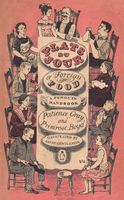Advertisement
Braising
By Patience Gray and Primrose Boyd
Published 1957
Braising is an operation referring to joints of meat, saddle of hare, whole chicken, duck, and smaller birds, in which they are contained in a heavy lidded iron or copper cocotte and cooked very slowly in a minimum of liquid, stock, or wine, after an initial firing in hot oil, butter, or lard. As a rule, the meat, hen, duck, or fish is laid on a mirepoix or vegetable bed of chopped and sauté onions, shallots, herbs, and root vegetables, and a little bacon, which are to communicate their flavour both to the object braised, and to the sauce. After cooking, the sauce is then strained and reduced by rapid boiling, and is served with the meat or bird. Sometimes, as in Canard aux olives or Canard aux navets, an additional condiment is prepared apart, and added to the strained sauce. Braising was originally carried out in copper braisières which were capable of sustaining live charcoal on their lids. In this way the heat was applied from above as well as from below, on top of the stove, producing a combination of stewing and roasting. Now that this is no longer the case, the braise is usually started on top of the stove and completed in the oven, which is awkward as it requires basting. This is necessary because the liquid in which it cooks tends to reduce and there is the danger of the meat drying. For this reason, and perhaps formerly as a protection against the heat from above, the piece of meat, or whatever it is, is usually larded.



